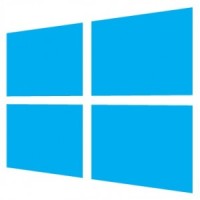As the computing industry has slowly moved away from desktop computers and laptops to devices that can be held in one’s hands or tablets, the relevancy of the operating system is coming under fire and being questioned. Microsoft’s Bill Gates once said that it is his goal to have a computer in every home and business is now basically reality, but as soon as it came true, the devices have been slowly replaced with newer technologies that are smaller, but still get the job done well enough.
Realizing change has already begun in the industry, Microsoft unveiled Windows 8 for public testing on March 1st. Windows 8 is the first operating system developed by Microsoft that can work on low-power microprocessors developed by ARM Holdings Plc. These low-power microprocessors are commonly found in tablets, making the new operating system compatible with the newer generation of computing technology.

Windows 8, having already been praised for its slick and new design is finally getting tested by the general public. With the public favoring smaller devices, Microsoft realized that even such devices need an operating system of sorts, and worked to meet customer expectations. The new operating system comes in two varieties, with the one working on the traditional desktop or laptop and the other for ARM microprocessors devices that works on cell phones, tablets and any other such portable device.
Borrowing from their smart phone’s interface and the “Metro” style, Windows 8 features tiles that can be easily moved around the screen or even just tapped to go right into an app. The tiles also update in real time, letting all users stay connected to their social media world, their emails and phone updates at just a glance. And for those users that prefer the older style, the “Metro” style can be deactivated with just a click.
Also important is its ability to work in compatibility with business manager’s devices and their “Office” applications that have become a trademark of modern day business.
Having an interface that is functional and even enjoyed by the market base is not enough. From there Microsoft and its competitors must get software developers to agree to develop for their operating system. Microsoft has traditionally been dominant in software support, giving them a boost. Developers that already make apps for Window’s phones have also found the transition over quite simple.
The key for Windows 8 now is timing and pricing. The tablet market is expanding, with the Ipad base also growing, pushing other operating systems onto the market. Microsoft’s release for sale must be soon as to get enough market exposure. Following their traditional 3 year window, that would push the release to around October of 2012.
